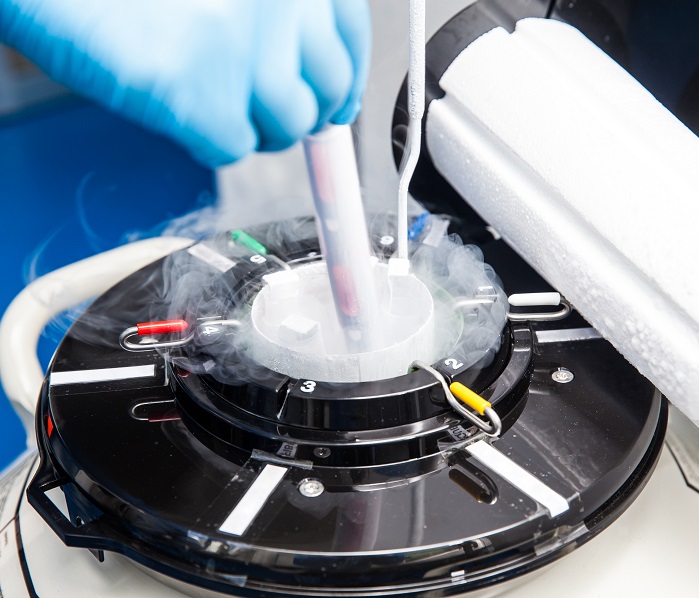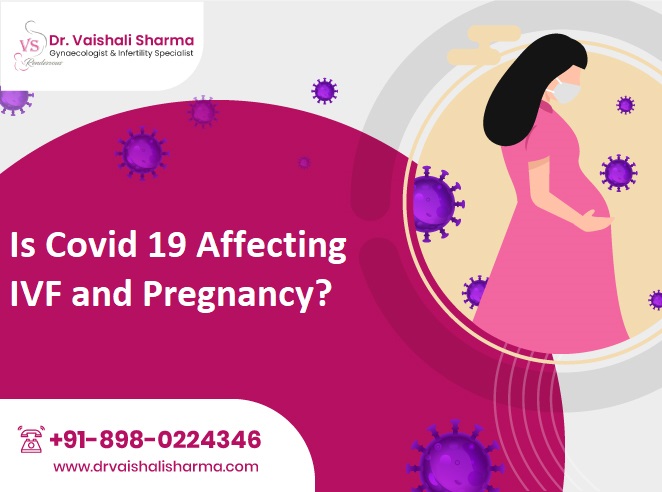Frozen Embryo Transfer Procedure

In case the first IVF cycle fails, then the frozen embryos can be picked for the further IVF cycle. And this cycle is called the frozen embryo transfer cycle.
What is a Frozen Embryo Transfer (FET)?
The Frozen embryo transfer is a cycle in which the frozen embryos have been transferred into the uterus. In our best IVF Center in Delhi, these embryos have been previously fertilized and froze and kept aside as the cryopreservation for future pregnancies. In case your first IVF cycle failed, then you can use these frozen embryos for further cycles.
In FET in Delhi, you don’t need to start the IVF from scratch, as you will have frozen embryos from the previous IVF cycle. If the IVF failed when the embryo failed itself to implant into the uterus then you can take the help of FET to transfer frozen uterus without starting the fresh IVF cycle. In Frozen embryo transfer in Delhi, the frozen embryos are frozen and then keep into the liquid nitrogen at the temperature below minus 196 degrees Celsius. These frozen embryos will be thawed and transferred into the woman’s uterus. This entire cycle prevents you from taking the fertility drug, from retrieving eggs and sperms and from fertilizing them into the lab.
The age of women also plays a great role in the FET process. The younger the women are, the higher the number of FET is processed. Research shows that women under the age of 35 years have a high number of embryos to be frozen when compared to women who are 40 years or above.
When it comes to FET, we provide the most natural environment and atmosphere to the embryo for healthy growth. When a natural atmosphere is provided to an embryo, it becomes healthier as well as the overall cost of pregnancy can be also decreased with declining usage of taking pregnancy hormones. Also by this procedure test tube baby cost in Delhi becomes more affordable.
Take a Second Opinion From Our IVF Specialist
In Which Conditions, Frozen Embryo Transfer is Recommended?
Although, FET is advisable along with the IVF treatment in order to increase the chances of implantation, there are several cases, were our best IVF specialist in Delhi recommend frozen embryo transfer.
- If the woman has a higher risk of OHSS, then frozen embryo transfer is recommended. In order to prevent OHSS, freezing of embryo is necessary.
- It is ideal for women with an unconducive uterus or Uterine Malformation. There are minimal chances of implantations with the unconducive uterus. So in order to increase the chances of implantation, frozen embryos are suggested by our experts.
- If the first IVF cycle failed, our IVF exert recommends frozen embryo transfer in order to increase the chances of conception.
- FET is also recommended for blastocyst development. Whenever the blastocyst culture involved in IVF, frozen embryo transfer is essential in order to select the healthiest embryo.
- It is an ideal way to minimize the cost and timeframe of IVF treatment with the help of FET. If you were to restart IVF again, you need to start the process from the egg retrieval phase which is quite expensive than FET.
- Women with abnormally elevated hormones are ideal for FET. The abnormal hormones can adversely affect the endometrium and reduce the chances of implantations.
- When genetic testing of embryos is required. The pre-implantation genetic diagnose i.e. PGD can only be done after freezing the embryos in IVF hospital in Delhi.
What are the Benefits of Frozen Embryo Transfer (FET)?
Fewer medications: the pregnant women are prescribed with the hormone stimulating medications like estrogen and progesterone. These hormones help to thick the lining around the uterus in order to prepare the body for pregnancy. The embryo is ready to implant, the patient does not need any medications.

Less stress: according to the studies conducted on patients going through the FET, their overall IVF cycle experience becomes less stressful with the FET cycle. There are many factors that cut off in the FET cycle when compared to the entire IVF cycle like egg retrieval, egg development, and fertilization.
Low cost: The process results in much reduction in cost, as the new embryo is already available. The cost of a FET is very less when compared to the entire IVF cycle.
High success rate: The FET is nothing to do with your age and that is why it has higher success rates. The frozen embryo will increase the chances of implantation as one of the best FET benefits.
Frozen Embryo Transfer Procedure with PGD/PGS
Our Frozen Embryo transfer procedure in Delhi will be combined with the pre-implantation genetic diagnosis or preimplantation genetic screening. We use pre-implantation genetic diagnosis in order to select the best embryo. The miscarriage rates along with the PGD treatment in Delhi are very less compared to the conventional IVF cycles. With more than half of the couples with women under the age of 40 will successfully see live birth with our first IVF along with FET and PGS attempt.
We use highly advanced tools to evaluate the embryos in the PGS treatment in Delhi. This enables us to diagnose the best embryos for implantation. We conduct a standard PGS on all the embryos along with FET procedure in Delhi. When our standard genetic screening method displays that all the embryos are abnormal, then we again check all the embryos with a different set of chromosomes. This highly advanced method enables us to provide accurate information to the expected couples for achieving good results in pregnancy and a healthy baby.
Frozen Embryo Transfer Procedure without PGD/PGS
Research shows that the fertility drugs that stimulate the ovaries do not create ideal implantation conditions in the uterus. It means that the fresh embryo transfer may have fewer chances for a healthy pregnancy with the help of FET procedure in Delhi. In order to avoid this problem, all the embryos are frozen and then checked for PGD treatment in Delhi to check the development of an embryo without the influence of ovarian stimulating drugs.
For many couples, however, this study might be misleading as we closely look at the appearance of the embryos under the microscopes. After observing, we mark them as the good and the high-quality embryos and then separate them from the lesser quality embryos. In PGS treatment in Delhi, our classification of embryos depends on the number of cell divisions occurred in the embryo at the given time in their growth cycle. When the embryo reached the desired cells, they are classified as good embryos. In our IVF centre in Delhi when the embryos have a uniform size and when there is no cellular development, there are qualified as the lesser quality of embryos.
Success Rate of Frozen Embryo Transfer (FET) in Delhi
The overall success rate of frozen embryo transfer (FET) in Delhi and IVF cycles in Delhi is almost the same and these two processes maintain the same indicator of success. It is also because the embryos stop again when they are frozen. There is 50% delivery per thaw for women who are under 35 years. The success rate of FET widely depends on the age of women, just like the IVF cycle. As the age increases the success rate of FET in Delhi reduces. But taking the treatment in the right age from the best IVF centre in south Delhi can increase your chances of a success rate as age is one of the important IVF success rate factors.
When you are ready to talk about your infertility issues, we’re here.












